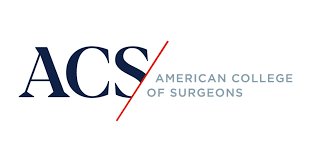New planning tool aims to boost success of surgical quality improvement projects

Editor's Note A newly developed framework could significantly strengthen the planning phase of small-scale surgical quality improvement (QI) projects, which often falter due to inadequate preparation, MedicalXpress October 16 reports. According to a report from the American College of Surgeons (ACS), published in the Journal of the American College of…
Advances in ambient AI bring precision to OR performance

Pinpoint accuracy in surgical technique has advanced beyond what many ever thought possible. Unfortunately, such refinements have been slower to reach the perioperative business front. OR leaders often rely on vague metrics and educated guesses to guide their teams. Ambient artificial intelligence (AI) is changing that. When integrated with data…
Simulation-based robotic surgery training boosts team confidence, communication

Editor's Note Hands-on, simulation-based education can dramatically raise confidence and communication among perioperative teams learning robotic-assisted surgery, AORN Journal October 22 reports. The article profiles how one nurse leader at Duke University Hospital built a comprehensive robotics training program that helped staff achieve near-total confidence in managing robotic systems safely…
ACS conference charts bold future for surgical quality with data, teamwork, frontline innovation

Editor's Note Surgical quality leaders are pushing boundaries with new strategies that blend technology, frontline engagement, and national-local collaboration. That was the message from the American College of Surgeons (ACS) Quality and Safety Conference (QSC), held July 17–20, 2025, in San Diego, according to a September 10 ACS report. The…
From checklists to culture: Practical steps for leaders to strengthen OR safety

The OR has a planned rhythm that relies on training, checklists, and teamwork to turn the complex surgical environment into an elegant orchestration that keeps patients safe. But efficiency and a climate of safety do not just happen—they depend on culture. When teams communicate openly, follow standards consistently, and feel…
Reframing the surgical time out to fight complacency, improve outcomes

Editor's Note On this National Time Out Day, perioperative leaders are being called to reinvigorate the time-out process to combat complacency and reduce adverse events. Despite decades of safety initiatives, the adverse event rate in surgical care remains high—38% of perioperative cases, with nearly half tied directly to surgical procedures,…
Spotlight on safety: Call for renewed vigilance on National Time Out Day

Editor's Note Wrong-site surgeries are on the rise, and insufficient surgical time outs are a key contributor, according to new data highlighted by AORN on June 10 in honor of this year’s National Time Out Day on June 11. Based on The Joint Commission’s Sentinel Event Data 2023 Annual Review,…
Study shows WHO surgical checklist boosts safety, but compliance gaps risk patient outcomes

Editor’s Note Tertiary hospitals are embracing the World Health Organization (WHO) Surgical Safety Checklist (SSC), yet inconsistent compliance—especially during time-out—exposes patients to avoidable risks, Cureus April 29 reports. In this study, the researchers found that while overall integration of the SSC is promising, there were compliance gaps particularly in pre-incision…
New 10-point checklist aims to streamline patient selection for outpatient joint replacement

Editor's Note As joint replacement (JR) procedures increasingly move from the hospital setting to ambulatory surgical centers (ASCs), selecting the right candidates for these outpatient procedures becomes crucial. To support this transition, study authors Madhav Chowdhry, MD, and Edward J. McPherson, MD, developed a comprehensive, evidence-based checklist called Checklist Outpatient-Joint…
State of the huddle: The barriers to and benefits of preop meetings

Complex problems do not always require complex solutions. Consider the surgical safety checklist. In 2020, more than a decade after the World Health Organization (WHO) started advocating that every hospital use the checklist, research from PSNET found that more than 90% of ORs in countries with a high human development…

 Free Daily News
Free Daily News